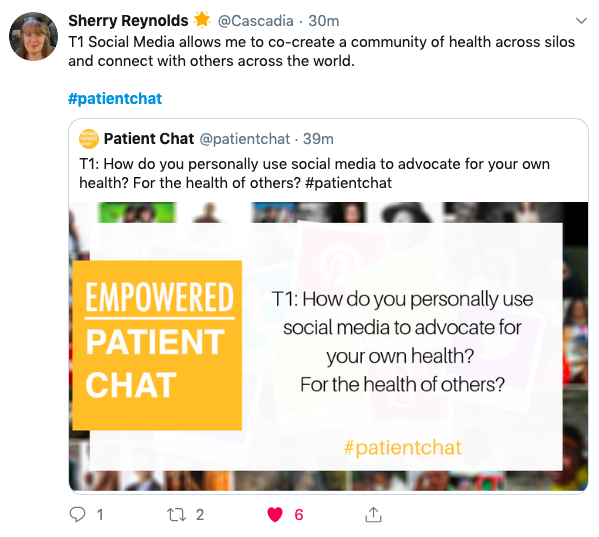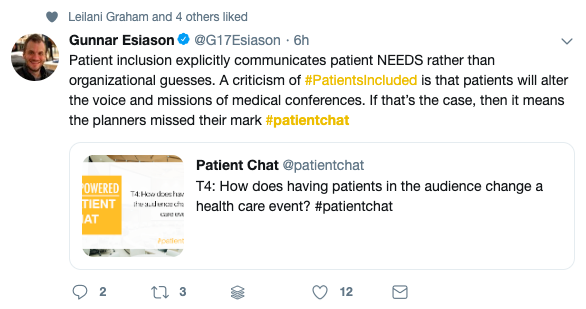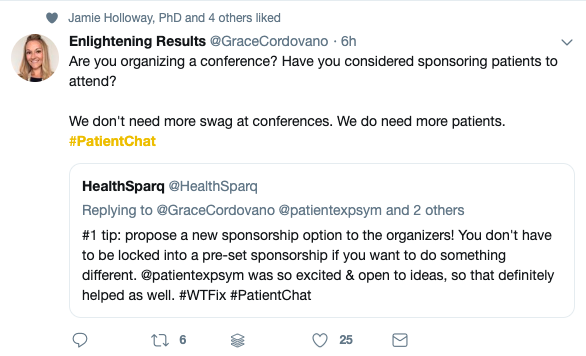Fact or Fiction? AML Causes & Symptoms
Dr. Daniel Pollyea, an AML specialist, dispels common myths around the causes and symptoms of AML and shares advice so that you can identify credible resources for information. Download the Program Guide here.
Dr. Daniel A. Pollyea is Clinical Director of Leukemia Services in the Division of Medical Oncology, Hematologic Malignancies and Blood and Marrow Transplant at University of Colorado Cancer Center.
See More From the Fact or Fiction? AML Series
Related Resources
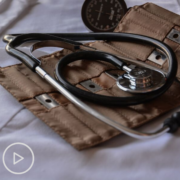
|
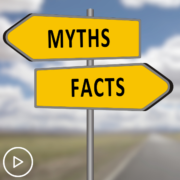
|
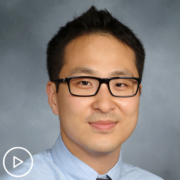
|
Transcript:
Ross:
I’m Ross Reynolds. Today we’re gonna be debunking some common misconceptions about the causes and symptoms of AML.
And joining me is Dr. Daniel Pollyea. Dr. Pollyea, could you introduce yourself?
Dr. Pollyea:
Yeah. Hi. Good morning, everyone. I’m Dan Pollyea. I’m an Associate Professor of Medicine here at the University of Colorado, where I am the Clinical Director of Leukemia Service.
Ross:
I wanna emphasize to you that this program is not a substitute for medical advice, so be sure to consult your healthcare team when it comes to solid information about it. But you will get some background that I think you’re gonna find useful. And you might have some questions as we go along.
Dr. Pollyea, let’s start out with the basics. What are the causes of AML?
Dr. Pollyea:
Yeah. So, Acute Myeloid Leukemia, it’s a disease, a cancer of the bone marrow.
And it’s the result of an accumulation of mutation and chromosomal abnormalities that affect the DNA of a precursor cell in the bone marrow, otherwise known as a stem cell.
And those abnormalities accumulate until that cell can no longer properly mature, and it also can’t properly die. And so, a cell like that just makes copy after copy after copy of a cell until it crowds out the whole bone marrow with these sorta useless, immature cells.
And the end result of that is the failure of the bone marrow, which causes all of the problems associated with this disease. So, biologically, that’s sort of what happens to make this disease occur.
Ross:
What are some of the myths that you hear from patients that come in and they say, “Oh, this must’ve caused my AML,” but you have to tell them that’s not so?
Dr. Pollyea:
Right. So, I mean, this is one of the most frustrating issues for patients and their families after diagnosis. I mean, it’s a rare disease, only about 30,000 cases a year in the United States. And so, trying to associate a rare disease with external or environmental factors is difficult to impossible. So, although there are a variety of exposures that probably contribute to this disease, we have very little understanding of what those exposures typically are or how that all works.
So, there’s a few things that we know pretty well; large doses of radiation, either associated with like industrial accidents like the Chernobyl disaster, or some of the radiation therapies that patients receive for other types of cancer. Other types of chemotherapy that are used to cure other cancers can contribute to this disease in later years.
We know that there are certain precursor conditions that can evolve to AML, so a person with myelodysplastic syndrome, for instance, has a fairly high chance of someday evolving to develop Acute Myeloid Leukemia. But beyond these sort of a few associations, there isn’t a whole lot that’s known or proven.
Ross:
Now there is radiation associated with X-rays, and some people think that X-rays can cause AML. Is that true?
Dr. Pollyea:
Yeah.
So, I mean, I think a priori no because millions of people get X-rays every day, and only 30,000 people a year get AML. So, clearly it’s not a simple association between getting an X-ray and developing AML. But I think that there is an unknown interaction between environmental exposures and a person’s individual genetic makeup that makes a person more or less susceptible to developing something like AML with respect to exposure to the environment or X-rays and things.
So, while you cannot say that getting an X-ray will lead to AML, certainly there are some people who are more sensitive to the damage that’s done by something like an X-ray. And so, the best course of action is to be cautious and judicious about your exposure to these things, but not to not get these things when they are medically necessary.
So, that’s the challenging balance.
Ross:
Here’s something else we’ve heard, that weed killers can be a risk factor for AML. Is that true?
Dr. Pollyea:
I mean, I think there’s a lot coming out now about weed killers and their association with other types of cancers. Again, I go back to the limitation we have in that in only 30,000 people a year in the United States get AML. Millions of people are exposed to weed killers.
We’re statistically never going to be able to make a clear association. I think that there are certainly some risks for some people. Whether you’re that person who’s more susceptible to developing leukemia or any other cancer because of exposure to a weed killer is impossible to know.
So, like all of these things, I think the advice we have is you have to live your life. You have to do your best to sort of avoid things that you can avoid that you think would be… Or that may cause problems. But not to let those things prevent you from living a normal life.
I know that’s not a satisfying answer, but at the moment that’s the best answer we have.
Ross:
Is formaldehyde exposure another risk factor for AML?
Dr. Pollyea:
Yeah. We think that it is, and kind of along the lines of benzene. But, again, we think that those studies that have shown those types of association show it in very high amounts, amounts that most people in this country would not be exposed to. But I do think, or we do think that there is something to that, to formaldehyde somehow contributing to this.
Ross:
What’s the difference between a risk factor for AML and a cause of AML?
Dr. Pollyea:
Yeah. So, I think risk factors by definition are things that may contribute to AML. And a risk factor for AML by that definition could be walking down the street and having some exposure to radiation from the sun. A cause of AML is something that is a much more solid sort of well-understood factor.
Like I said before, having myelodysplastic syndrome, there is a high chance that that can evolve to Acute Myeloid Leukemia. And if that happens then the MDS, the myelodysplastic syndrome, could be considered or would be considered the cause of your AML. So, very, very different in terms of the amount of evidence that goes into making those determinations
Ross:
Is there a genetic component to this? Can this run in a family?
Dr. Pollyea:
Yeah. So, this is a disease of the genome.
So, I mean, in a lot of respects it is a genetic disease. But the question is very different when you ask is this an inherited genetic disease? Is this disease due to a gene that I inherited from a parent or could pass along to a child?
For many, many years, the answer from the medical community was, “No.” This was not considered to be a disease that clustered in families or that could be inherited. We now know that that’s not necessarily the case. There are some very rare cases where this does seem to travel in families or cluster in families. And we’re now beginning to understand who those people are and what those genes are.
But the vast majority of people with this disease did not inherit a gene to contribute to it and cannot pass this along to a child. This is a random, spontaneous event that occurred within one person’s own body and is not traveling within family. So, we’re learning more and more about this, but really, the vast majority of this is not an inherited genetic condition.
Ross:
You’ve mentioned gene mutations. What mutates a gene? What causes that to happen that could lead down the line to AML?
Dr. Pollyea:
Yeah. Yeah. That’s a great question. Most of the time we do not know the answer to that. These gene mutations occur spontaneously, randomly, and we don’t understand why they happen when they do happen.
And I know that’s, again, not a satisfying answer. It’s very frustrating, particularly patients come in, and, “I’ve lived a healthy lifestyle. I’ve done everything right. I exercise. I eat right. How could this have happened?”
These are things that for the most part are out of the control of a person. These aren’t impacted by your diet or your activity levels, what you eat or don’t eat, what you do or don’t do. That’s a real frustration. In the end, in almost all cases we don’t know or understand why these gene mutations or these, I call them mistakes in the body, occur when they occur. We don’t understand them.
And, Dr. Pollyea, someone asked if benzene can be a risk factor for AML.
Dr. Pollyea:
Yeah. So, benzene is one of the sort of rare environmental exposure associations that we do have clear associations with AML.
But the level of benzene that a person would need to be exposed to is really something that hasn’t been seen in this country in a very long time.
We’d be talking about like an industrial accident type exposure in almost all cases, so being exposed to a cleaning solution or some other fairly minor exposure to benzene, we don’t think is enough, in most cases, to prompt this disease. But benzene in very high doses, like an industrial accident, yes, that is something that we understand can certainly contribute or cause AML.
Ross:
Autoimmune diseases, such as arthritis, can they increase the risk of AML?
Dr. Pollyea:
Oh, boy. That is a really interesting one. So, there are papers in the literature that do support those associations. And I know in my own practice I certainly see that trend. So, I do think that there is something there. There is a proven association between autoimmune conditions and myelodysplastic syndrome, which I said before can be a clear precursor condition to AML. So, certainly, that is an association that is a possibility.
It can be a little difficult to tease out whether it’s those diseases that are associated with ultimately developing AML, or the treatments that people get for some of those autoimmune diseases. Those treatments can modulate the immune system in certain ways that may, in fact, contribute or drive the disease. So, that’s a difficult thing to tease out.
But in general terms, yes, I think there are some associations. Now not by a long shot everyone with an autoimmune disease gets AML. It’s a teeny, tiny fraction. But I think there is an association there.
Ross:
How easy is it to diagnose AML?
Dr. Pollyea:
Well, I mean, I think there’s very clear diagnostic criteria for AML. But I guess that doesn’t really answer the question. And we certainly have patients who come to us after many months of frustration without a clear diagnosis.
So, those scenarios can play out. Many times AML’s a very dramatic presentation, so people get very, very sick very, very quickly with extraordinarily high white blood cell counts and suppression of all the other blood counts that come from the bone marrow like red blood cells and platelets.
In those cases it’s pretty clear that there is a type of acute leukemia going on. There can be some difficulty distinguishing Acute Myeloid from Acute Lymphoblastic Leukemia; those are sort of like cousins, but very different and treated differently. So, it kinda runs the gamut. I mean, it can be pretty clear, but it’s sometimes missed, so yeah.
Ross:
This is a great lead-in to my next question, which is about the symptoms of AML. What should be the warning signs that this might be something you need to get looked at?
Dr. Pollyea:
Right. So, at presentation, the main symptoms are reflective of the fact that the bone marrow, the organ that makes all the cells of the blood, has failed.
So, that can cause severe anemia. Signs of anemia: a white sort of appearance, feeling dizzy or lightheaded when standing, short of breath, weak, tired, fatigue. Those are all pretty clear presenting symptoms for AML. Because the bone marrow also is responsible for making platelets that clot the blood, some people will present with a bleeding complication, or a very subtle rash made up of these particular red dots. We call that a petechial rash. And that rash can come on when the platelet count gets very low.
Sometimes a person will present with an infection or infections that don’t go away or don’t clear because of decrease in white blood cells, the infection-fighting cells of the bone marrow. Those are made in the bone marrow and can fail in the setting of this disease. So, those are the most common symptoms at presentation, symptoms that are reflective of bone marrow failure.
Ross:
You mentioned that sometimes the presentation could be very dramatic, and it sounds like the symptoms are very severe, very quickly. Is that always the case? Is that often the case?
Dr. Pollyea:
That is the case in, I would say, a minority of times. That’s usually the case. It’s more often seen in younger patients with AML. Typically, older patients with AML have a more smoldering course and a much less dramatic presentation, although this sort of very dramatic and dangerous presentation can happen in older patients, but it’s probably something like a third of the time that those very dramatic and medical emergency presentations occur.
Ross:
How important is early diagnosis?
Dr. Pollyea:
Well, I mean, it’s crucial. I mean, in particular in those cases where it’s a very dramatic and proliferative diagnosis, or presentation. A quick diagnosis and recognition of this condition is very important because the sooner a person starts effective treatment the better the ultimate outcome is.
I would say in general terms that applies to all AML patients, but certainly there’s some degrees of variation. So, there’s some AML patients that when I hear about their case on the phone from a referring doctor, it’s appropriate to see them next week in the clinic.
So, it’s not always a medical emergency, but we would never, even in those next-week-in-the-clinic patients, this isn’t something that can wait for weeks or certainly months. This is something that needs to be addressed fairly quickly.
Ross:
What are the best ways to manage those symptoms?
Dr. Pollyea:
Right. So, I mean, at presentation, all those symptoms, the best way to manage those are to start treatment as quickly as possible. So, impacting the underlying cause of this disease is the most important and critical factor to getting a person feeling better because all of these problems stem from the disease in the bone marrow, and so everything else that you do to sort of help a person’s symptoms are Band-Aids when you’re not talking about getting to the root cause.
So, that’s at presentation. Now once we start treatment, there are many potential side effects to any number of treatments. And it all is dependent on what treatment you’re getting and other things about you that will make this a significant problem in some cases. And in that setting, we do have ways that we can aggressively manage a person’s side effects.
Ross:
Can you manage all of the symptoms? Or can people still be experiencing symptoms even after they’re in treatment?
Dr. Pollyea:
Absolutely. So, a person with this disease, depending on how long they’ve had it and some of the features, may not be feeling back to their baseline self for potentially weeks or months after treatment starts in the best-case scenario. So, that can be very frustrating, but a person needs to sort of be able to continue to have a good outlook and stay positive.
Because we are able in many cases to make a big impact on this disease and return a person to their pre-disease quality of life.
Ross:
What are some of the myths that you hear, Dr. Pollyea, about the treatment? Some things that people come in to you saying they think that it helps, but there’s no science to back that up?
Dr. Pollyea:
So, myths about treatment, so many people have a lot of preconceived notions about the intensity of a therapy that they’re going to be asked to withstand. And although sometimes we do treat this disease very intensively, that’s not always the case, and now we have some very effective lower-intensity regimens that can be used in a variety of different scenarios.
There are a lot of people who have a lot of preconceived notions about a stem-cell transplant or a bone-marrow transplant and whether or not they would be eligible for this based on maybe what they’ve heard from friends or family, or what they’ve seen in the internet.
And those are often incorrect. And so, keeping an open mind about treatment options, and discussing those in detail with your doctor are really, really important.
Ross:
You mentioned sometimes it presents in young people, sometimes in older people. What’s sort of typical?
Dr. Pollyea:
This is a disease of predominantly older patients, so the median age of presentation is 68. So, that means that over half of the patients are over 68 years old at diagnosis. So, while this does happen, can happen in younger patients, that’s really an unusual situation. This disease is, like I said, it is predominantly a disease of older patients.
Ross:
There are some patients who I understand think that supplements can deal with the symptoms of AML. Is that accurate?
Dr. Pollyea:
You know, I mean, I think the supplement question is always a challenge. A lot of these supplements, or most of these supplements have never been tested with the rigor of treatments that we’re accustomed to in the medical establishment.
That being said, I won’t deny that some of the supplements can help patients based on what patients’ experiences are and what they tell me. I think what’s really important is just be very open and honest with your doctor about the supplements that you’re taking or want to take to ensure that there are no sort of unanticipated interactions with treatments.
Because I think most doctors are very open to having their patients care for themselves in the ways that they’ve become accustomed to, and they know their bodies very well, and we’re very open to that. But there are sometimes that a drug or a supplement might have a bad interaction with the treatment.
And so, a good example in my practice is antioxidants. So, there’s a lot of literature, a lot of interest in antioxidants as cancer-prevention treatment.
And a lot of that is not well-established, but still I don’t see much harm. But when it comes time to treating a cancer, that’s a very different situation. When we give a patient treatment to try to kill the cancer cells, many times we’re trying to provoke oxidation. That’s part of how these drugs and these treatments work.
So, if you’re taking those treatments, but also at the same time taking antioxidants, there’s the potential you could sort of be cutting your therapy off at the knees, fighting it with one hand behind your back. So, for the period of time when my patients are getting an active treatment, I ask that they don’t take it antioxidant.
And they can resume that in the future in the hopes of preventing another cancer. But the time to prevent with an antioxidant isn’t appropriate when you’re dealing with an active cancer. So, that’s just one example.
Ross:
Fatigue could be a symptom of AML, but there are a lot of causes of fatigue.
How do you differentiate between something that really could be AML and something that isn’t?
Dr. Pollyea:
Yeah. That’s a challenge because I think these are, as I said, older patients. And older patients have a lot of other medical problems. And older people get fatigued, just that’s unfortunately part of the normal aging process. So, we would usually make an assumption that a person’s fatigue and diagnosis is due to the leukemia, the anemia as a result of the leukemia.
But as we successfully treat a patient if they are responding based on their numbers and other objective criteria, but the fatigue is not improving then I think that’s where we would start to look at other contributing factors, and there can be many, so having an open mind at that point is important.
But at the beginning, this is such a monster of a disease, it’s so overwhelming, I think the focus is usually on assumption that the fatigue is due to the disease or to a treatment associated with this disease.
Ross:
This question: is loss of appetite a symptom of AML?
Dr. Pollyea:
Yeah. I definitely see that, hear that, so sometimes people come in and they say that. Sometimes it may not be a loss of appetite, but an extreme weight loss, so a lot of different types of cancer, including AML, can cause that, just basically unintentional weight loss.
A person’s not trying to lose weight. They’re eating what they think is their normal amount and they’re losing tremendous amounts of weight. So, those are both potential presenting symptoms with AML. And loss of appetite, unfortunately, can be associated with some of the treatments for this disease. And taste changes, things not tasting good, can all contribute to that as well, so those are all challenges that our patients face.
Ross:
How important is to get a second opinion? I mean, are all doctors like you pretty much on the same page when it comes to symptoms and treatment?
Dr. Pollyea:
So, this is a challenge. So, the answer to the second question first is unfortunately, no. A lot of this hasn’t quite been standardized. And some doctors, oncologists, cancer doctors, they’ll predominantly be treating the things that are common: colon cancer, breast cancer, prostate cancer. And they will probably only have a few cases of acute leukemia a year.
And so, their approach to this is going to be different than somebody who spends all day seeing patients with AML and thinking about AML.
So, a second opinion is a very nice thing to be able to do. The problem with this disease is that most times it doesn’t afford that opportunity. So, with other conditions you have some time to go out, read about it, talk to some different doctors, get a good plan together.
With AML, often that’s not a possibility. A person is so urgently sick that you have to sorta deal with the resources where you are. The best recommendation I have there, if you do find yourself in a situation where there’s not a lot of expertise is to ask your doctor to just call somebody in the region or email somebody in the region who may have that expertise.
And most doctors all over the country have that sort of resource or partner that they will go to and talk the case through with them, and maybe a transfer to one of those high-volume centers is appropriate.
And maybe that’s not a possibility or appropriate, but maybe you would benefit from just talking… Maybe your doctor would benefit from talking this through. But in cases where it’s not such a dramatic presentation, then yeah, for sure, I think a second opinion can be appropriate. But this isn’t something that can be sort of drawn out for long period of time.
Ross:
You know, when you find out something like this, your tendency might be to jump on the web and start searching for AML. How do you vet those sources that you look at? How do you figure out that their – what would be a sign that they’re bogus sources?
Dr. Pollyea:
Yeah. I mean, I think this field is so rapidly changing and the treatment that we have, that I would, for the most part, assume that what you’re finding on the web is not relevant and is not an up-to-date resource. So, the resources that I listed, the NCCN, UpToDate, the Leukemia & Lymphoma Society, I should mention.
A very important resource that has up-to-date information, and they have even phone numbers for patients and their families to call to get connected with the proper people in a particular city, so that is a really important resource. But I’d be really, really cautious about what you find on the internet because things are changing so fast in this field. There’s a lot of outdated and misinformation on the internet.
Ross:
Well, then there’s outright scams. One of the things you mentioned before we went on is be cautious if someone’s asking you to put money upfront, or if it’s a nonmedical facility. What are some things that people should watch out for?
Dr. Pollyea:
Yeah. So, one of the things that is so important in our area is clinical trials and participating in clinical trials. Patients who opt to do this and receive experimental therapies can sometimes get the treatment of the future, get a drug that’s not currently available through the FDA, but may have a lot of promise.
And this is the way that we fight this disease. We’ve recently had an onslaught of approvals for AML and that’s because the patients being willing to participate in sanctioned clinical trials. So, participating in a sanctioned clinical trial is crucial, and it’s always a recommendation of all leukemia doctors.
When you participate in a conventional clinical trial, you’re asked to sign a consent form that explains what you’re doing and why. There is a confirmation that this has been vetted by an institution’s regulatory board that is prioritizing the safety and well-being of you, the patient. This has been approved by the FDA as a clinical trial. Nobody would ever ask you to pay money. That’s not ethical to participate in a clinical trial. Insurance covers whatever standard of care. And the clinical trial covers anything that isn’t.
So, if you find yourself in a situation where you’re not being asked to sign a consent form, where a clinical trial has not been reviewed by a regulatory board, where your doctor is not a leukemia specialist, where the FDA has not sanctioned the treatment, all of those are alarm signs.
Because there are people out there that are preying on patients in a desperate situation, a very difficult time in their life, and giving them sort of false hope and leading them down paths that are not legitimate.
One easy thing to do to sorta check to see if a clinical trial is legitimate is to go onto clinicaltrials.gov.
This is a resource set up by our national healthcare system that now feeds in every legitimate clinical trial from all over the world, needs to be registered on clinicaltrials.gov. So, if you can’t find your clinical trial on clinicaltrials.gov, I would have a lot skepticism and caution about that.
Ross:
Like what advice do you have for people when they’re first diagnosed? What are the first things they should try to do?
Dr. Pollyea:
Yeah. I mean, that reaction is totally normal and natural. I mean, many times these people are perfectly healthy or have been perfectly healthy, and this news is a complete shock.
And so, it is normal and appropriate to have some period of grieving for the healthy life that you are losing. But I would also, while giving yourself that time to grieve, first, draw on your support system, your family, your friends. Allow them to help you. Accept that assistance that they have. And to be optimistic because we are getting so much better at treating this disease.
I had mentioned before, there has been an onslaught of approvals for drugs in this area the likes of which hasn’t been seen in decades. We have new tools and weapons in our arsenal that we couldn’t have dreamed of even a few years ago.
We in our community are very excited and hopeful about the future and we hope that that will translate ultimately to patients, but being depressed or being down, being scared, all of that is normal.
All of that is expected. Anyone would feel like that. Allowing yourself to have those feelings and emotions is important, as long as it doesn’t get in the way of doing what you need to do to fight this disease.
Ross:
It sounds like you’re hopeful about new treatments for the disease. How about a cure? What’s the science? What’s the medical science say about that? Are we getting any closer to that?
Dr. Pollyea:
We are getting closer to curing this in more cases. So, like I mentioned before, as bad as this is, we can already cure some subsets of patients. There’s one type of Acute Myeloid Leukemia called Acute Promyelocytic Leukemia, APL. It’s an uncommon form of AML, less than 10 percent.
But we can cure close to 99 percent of people with APL. And APL, 15 years ago, was universally the worst form of acute leukemia to get. So, that dramatic 180 that we’ve seen in APL, we are hoping to translate into other forms of AML.
Some other forms of AML have cure rates as high as 50 percent, 60 percent, 70 percent in the right setting. Sometimes we can cure patients with a stem cell transplant fairly reliably. So, we are very, very hopeful about our ability to continue to make progress and cure more and more and more of these patients. That’s the future that we see.
Ross:
Dr. Pollyea, thank you so much. And thank you so much for ending on such a positive note. We really appreciate it. And thank you for joining us for this program today.
To learn more about AML and to access tools to help you become a proactive patient, visit powerfulpatients.org. I’m Ross Reynolds. Thanks for joining us.


